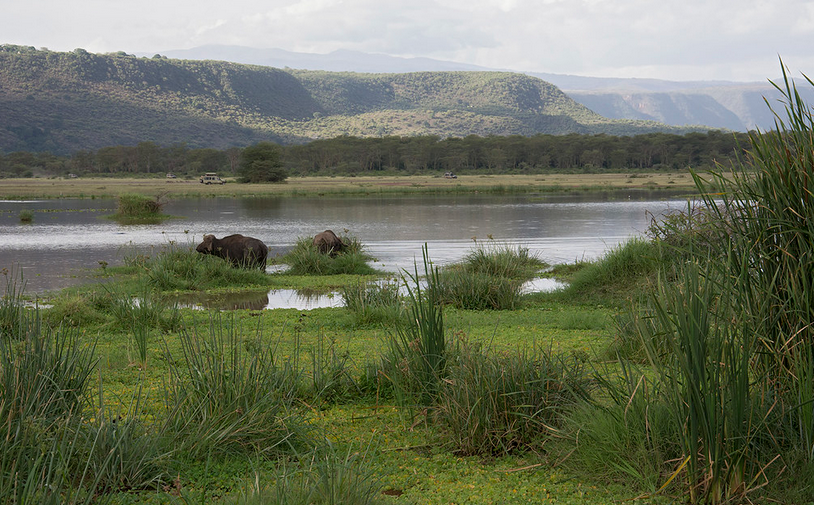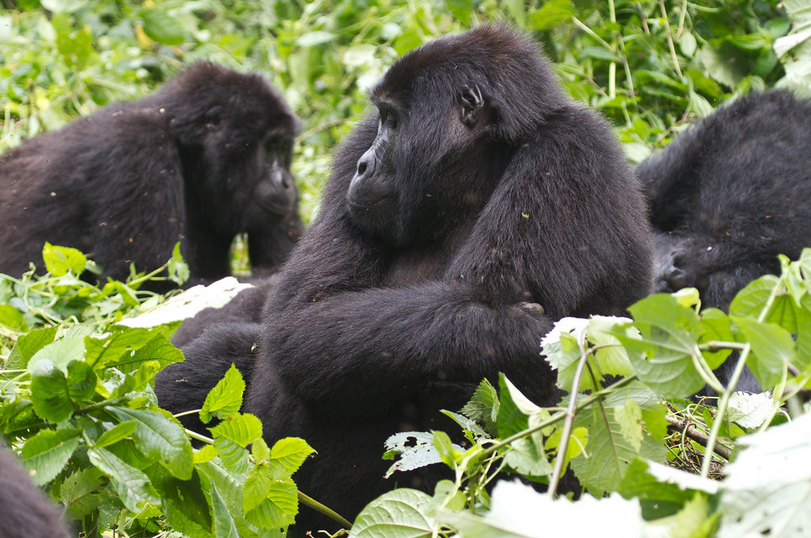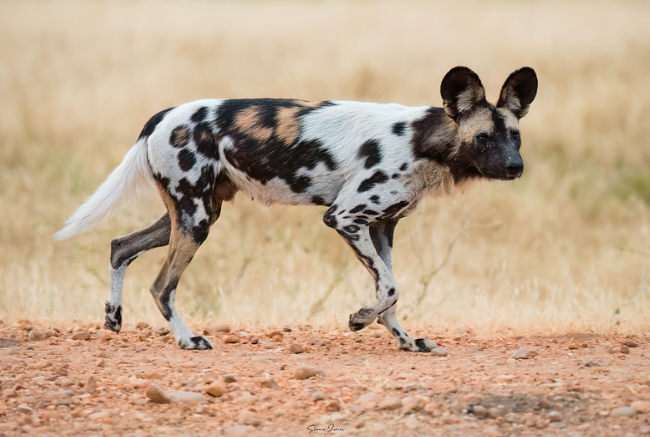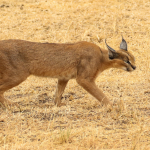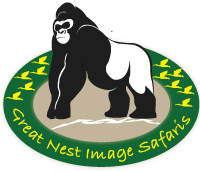The Saline Lake Manyara
The Saline Lake Manyara : lies in the Northern Tanzania, west of Arusha in the Eastern rift valley. It is the seventh-largest lake in the country with a surface area of 470km2. Actually, it was formed as a result of the great rift valley. The lake’s name is believed to be based on a plant called “Euphorbratinucalli”, locally known as Emanyara in the Maasai language. Generally, this is the spiky protective enclosure around their homesteads.
They probably perceived the escarpment hems in the lake like the enclosures thus the name. Others say that it may have originated from the Mbugwe word “Manyero” meaning a place where animals drink water. The lake has no outlet and thus subjected to intense evaporation allowing salt and other minerals to accumulate. There are crusty white deposits of soda glitter such as diamonds around the edges of the water. The saline water appears slightly soapy in texture due to the concentrated minerals, though the water is not too salty for the animals to drink.
Lake Manyara facts
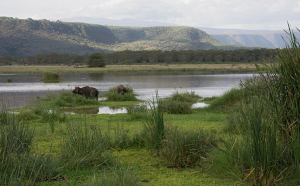
The Western side of the lake is flanked by a steep rift escarpment to the North of the Ngorongoro highlands. On the other hand, the East and Southeast, contains an undulating plain with isolated volcanic mountains which gives way to a peneplain. Several springs, streams, wetlands and smaller lakes, both perennial and seasonal drain into the lake. The flora of this lake diverse with over 670 flowering plants and fern species. However, most of them are wide spread and a few are endemic species.
The lake receives two rainy seasons that’s; the short rains from November to December and the long rains from March to May. Besides, April is the wettest month while the driest months are July, August and September. On this lake is an area covered by the Tanzania National Park Authority called Lake Manyara National Park. This is because it is situated between Arusha and the lake in Manyara regions. The Park was originally established in 1960 to protect the elephants which reside in the park and other wildlife. Animals include; buffaloes, lions, leopards, rhinoceros, giraffes, impalas, mongoose. Kirk’s dik-dik, baboons, zebras and many water birds especially flamingos. The Park simply bursts with life, with its population of abundant water birds, dense woodlands, steep mountainsides. It also contains ground water forest filled with acacia trees and its outstanding black-manned tree climbing lions.
Activities in Lake Manyara National Park
Birding
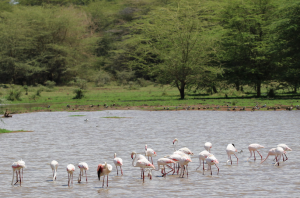
The lake is an ideal birdwatching location and while here you have an opportunity to spot the flocks of thousands of flamingos. These basically feed along the edge of the lake such as lesser flamingos and greater flamingos among others. In fact, the lake has got over 300 other bird species that you will spot while here. These include; Egyptian geese, Guinea fowls, Crowned eagles, Hornbills, Yellow-billed stork. Great-white pelican, Black-winged stilt, Pied Avocet, Caspian plover, Marsh sandpiper, White-winged, etc.
Fishing
This lake consists of a number of fish species such as the catfish and tilapia. It has got a small fishery, however fish only tends to be found near the inflow areas where salt concentrations are lower. Don’t miss to take part in this activity where you will be guided by the local fishermen. Here, they will explain the different fishing methods and fish species caught.
Nature walks
With the help of a tour guide, trek through the dense woodlands and hike the steep mountain sides. Here, you will spot different species of plant life and learn their possible medical properties. You will also spot primate species that may be roaming around like the vervet monkey, baboons, Manyara monkeys, etc.
Game drives

Basically, here you will come across the different mammal species and how they adapt to their habitants. For example, the giraffes that dwell where there are tall trees to feed on. The hippos near the water as well as get a chance to see the black-manned lions that climb trees. They usually climb trees because the ground can get too hot sometimes. On the other hand, they climb trees to get better view to scale the area for their next prey. Elephants will become a recurrent sight since the park is famous for its vast elephant herd. Other animals include; leopards, cheetahs, buffalos, impalas among others.
Canoeing
With the help of a guide you will be taken around the saline lake on the small boat. While here, you will come across hippos thou you will not be attacked by them since they are used to visitors. See the buffaloes grazing at the lake shores along with the impalas and water bucks. The ride is about three and a half hours long allowing you to explorer to the fullest. Also notice the different bird species at the lake, mostly the flamingos, egrets, spoonbills, herons, etc.
Mountain biking
The experienced guides will take initiative to take you where you will be provided with bicycles and bicycle gears. These would dearly aid you as you ride along different trails taking in the beautiful scenery of the park.
Community visits
This is a two-and-a-half-hour small trip to the Karata local villages where you will find and interact with the community. While here find out more about their culture as well as their daily activities. Visit the Maasai women and take part in their daily activities like cooking. You can as well go home with a few souvenirs like their beautiful handmade bead necklaces among others.
Magi Moto Hot Springs
The Swahili words “Maji Moto” literally translate to “hot water” which is a valuable explanation for their name. These magnificent hot springs are surrounded by palm and fig trees that only add a sense of tranquility to the area. Locals have taken it upon themselves to build a small restaurant and bathroom facilities around the hot springs to encourage tourists to stop by.
Mto Wa Mbu market town
This is situated just opposite the lake and its name “Mto wa Mbu” means “Mosquito Creek”. It is a trading center for the tribes of the area like the Gororwa, Chagga, Irangi and Tatonga, etc.
Why is Lake Manyara a top tourist attraction?
Although small in size compared to other national parks in Tanzania, Lake Manyara is a home to a variety of wildlife species. These include; elephants, baboons, lions, hippos, buffalos, giraffes, blue monkeys, leopards, antelopes, etc. Also its extra ordinary concentration of birdlife has made this place world-renowned among ornithologists.

